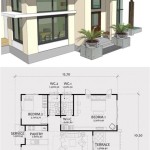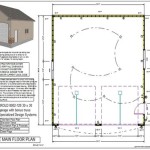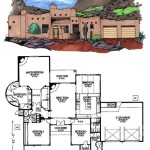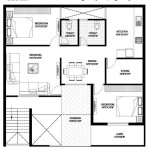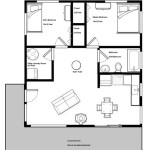How to Create Your Own Floor Plan
Creating a floor plan is an essential step in the home design process. A well-designed floor plan can help you visualize the layout of your home, make better decisions about furniture placement, and avoid costly mistakes during construction. If you're thinking about building a new home or remodeling your existing one, here's a step-by-step guide to help you create your own floor plan.
1. Determine Your Needs
The first step in creating a floor plan is to determine your needs. How many bedrooms and bathrooms do you need? Do you want a formal dining room? A family room? A home office? Once you have a general idea of what you want, you can start to sketch out a rough floor plan.
2. Measure Your Space
Once you have a rough floor plan, it's important to measure your space carefully. This will help you ensure that your floor plan is accurate and to scale. To measure your space, you'll need a tape measure, a pencil, and some paper. Start by measuring the perimeter of your space. Then, measure the length and width of each room or area. Be sure to also measure the height of your ceilings.
3. Sketch Your Floor Plan
Once you have all of your measurements, you can start to sketch your floor plan. To do this, you'll need a piece of graph paper or a CAD program. If you're using graph paper, each square should represent one foot of space. If you're using a CAD program, you can import your measurements into the program and create a digital floor plan.
4. Add Walls and Doors
Once you have a basic outline of your floor plan, you can start to add walls and doors. To do this, simply draw lines on your floor plan to represent the walls and doors. Be sure to include all of the doors and windows in your home.
5. Add Furniture and Appliances
Once you have your walls and doors in place, you can start to add furniture and appliances. To do this, simply draw symbols on your floor plan to represent the different pieces of furniture and appliances. Be sure to include all of the furniture and appliances that you want in your home.
6. Make Adjustments
Once you have your furniture and appliances in place, you can start to make adjustments to your floor plan. For example, you may want to move a wall to create a larger room or add a closet to a bedroom. Continue to make adjustments until you are happy with the layout of your floor plan.
7. Get Professional Help
If you're not comfortable creating your own floor plan, you may want to consider hiring a professional. A professional floor planner can help you create a floor plan that is both functional and stylish. They can also help you avoid costly mistakes during construction.

Make Your Own Floor Plans

Floor Plan Creator And Designer Free Easy App

Floor Plan Creator And Designer Free Easy App

Customize 2d Floor Plans

How To Manually Draft A Basic Floor Plan 11 Steps Instructables

Floor Plan Creator And Designer Free Easy App

House Plans How To Design Your Home Plan

House Plans How To Design Your Home Plan

How To Create A Floor Plan Before You Move

Floor Plan Creator Planner 5d


